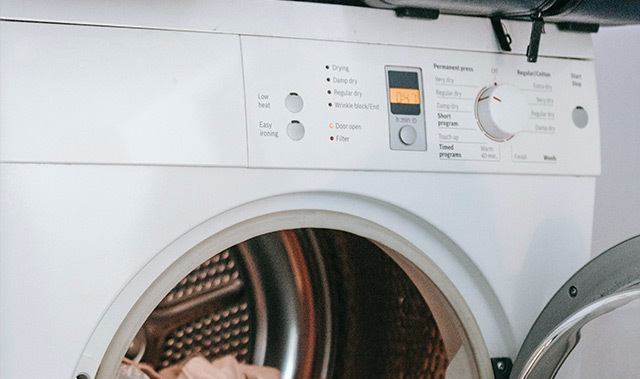NEWS CENTER
The status of led in the TV industry
2022-10-27
Introduction: LED digital tubes have brought revolutionary changes to the TV industry, which is undoubtedly a grand improvement. However, John C. Dvorak, a technology columnist for MarketWatch, pointed out that what the TV industry did not expect is that they are actually cocooning themselves this time. This "immortal" technique will greatly extend the replacement cycle of TVs. Once the market is saturated, the TV industry and various related industries will lose their overall growth potential. In view of this, he advises investors to stay away from flat panels and stocks of various related companies.
Here is the original text of Dvorak's op-ed:
For tech investors, if there's one investment to avoid right now, it's the flat panel industry, or more precisely, the flat-panel TV industry.
It sounds a little too decisive to say this. After all, there are some excellent companies in the industry. They have the best sales chanel, can make and sell products at the lowest price, and launch the most efficacy features... However, even those The fate of the best companies is doomed to be arduous.
The crux of the matter is the incremental rate of improvement and improvement of these displays. Specifically, the update cycle of a first-generation product is about five years or so.
Tips such as connection, copyright maintenance, and other internal techniques are relatively trivial and insignificant, and the average update cycle for these techniques is about two years. For example, some early flat-screen TV products did not have the now-ubiquitous HDMI connection, which naturally added to the owner's distress, as most modern devices cannot be used in conjunction with this TV.
Most of the latest products today employ a very sophisticated 3D technique. This allows users to watch 3D movies on their TVs, or images and videos they shoot with their own 3D video products.
In just a year or two, most high-end TVs will be fully 3D. Although 3D seems to me to be somewhat of a fashion frenzy, there is no denying that this frenzy must take root in the TV industry, because the TV industry has no choice but to incorporate 3D into its own comprehensive system. Nintendo has also played a big role in this regard, with their latest 3D DS, which also integrates a small 3D camera.
Right now, the trend in the TV industry is 240 HZ - which guarantees the perfect emergence of 3D power - and Light Emitting Diode (LED). I think the backlight problem will have a long-term negative impact on the sales of TVs and other monitors.
Initially, in the back of those LCD monitors or TVs, we relied on fluorescent light bulbs to illuminate. These bulbs have a limited lifespan, and the overall lifespan is about five to seven years depending on the design and application.
In any case, these new products age much faster than older CRTs. For example, I now have an old CRT TV in my house that kids use to play games, and it's approaching 30 years old.
One of the most critical factors in winning in the field of spending electronics is the need to have a clear plan for the degradation and obsolescence of the product. If anything people buy lasts a lifetime, companies can no longer expect to make more profits from them. Therefore, companies must learn to constantly invent new sales drivers and not completely saturate the market.
As early as the 1970s, Philips (PHG) developed smart light bulbs filled with inert gas. It uses various electronic tricks that can be applied to minimize filament loss and can be turned off automatically after a period of time. I still have two of these bulbs now and have been using them for thirty years.
However, we have to admit that light bulbs like this should actually be withdrawn from the market before they become popular. The reason is obvious.
The current Light Emitting Diode light source also has the characteristics of this kind of application for a lifetime, which is of great significance, and what is fatal is that everyone has also accepted the concept that it should be used for a lifetime and completely fixed it. In any use, the Light Emitting Diode light source will always be used.
Today's LCD TVs are backlit with this "immortal" technology. This trend will not end because Light Emitting Diode is more reliable and consumes less energy. I originally used a 50-watt outdoor insect repellent lamp at home, and now I have replaced it with a Light Emitting Diode product, the consequences are exactly the same, but the power consumption is greatly reduced.
Light-emitting diode technology now dominates almost the entire TV and computer monitor market, and with falling prices, it is destined to enter almost all lighting markets. When it completely dominates the country, companies will feel the real pain, because they can no longer profit from the normal aging and destruction of their products.
This puts many industries at risk, especially the TV industry, who will find that the TV switching cycle of consumers has been greatly extended, even beyond the cathode ray tube period of the year. In this case, whether it is Sony (SNE), Panasonic (PC) or Corning (GLW), once the latest generation of TV products on the market is saturated, they will find that their sales have no momentum to move forward.
Personally, I feel that all related industries, from chip makers to glass makers, in short, as long as it is related to flat panels, investors should stay away. Of course, as consumers, we needless to say, of course, we should choose the latest Light Emitting Diode TV.
CONTACT
No. 37-1, Dongxia Road, Zhangzhu Town, Yixing, Jiangsu, China
Copyright© 2022 Yixing Pinshang Electronic Technology Co., Ltd. Powered by www.300.cn
This website already supports IPV6 SEO

